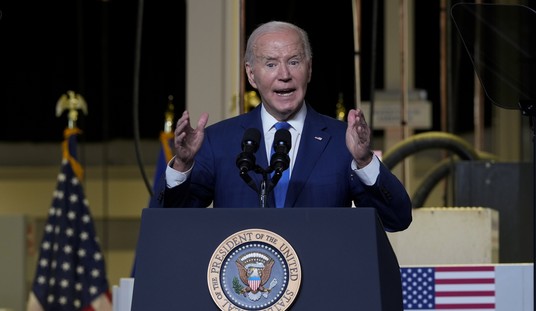In retrospect, the June 1989 massacre in Beijing's Tiananmen Square signaled that China's rise would not be peaceful. In Tiananmen, the Communist government's security forces slaughtered more than 2,000 demonstrators.
Let's stipulate that China's four-decade rise from a hunger-plagued developing country to a great power with global clout ranks as one of history's more striking political-economic achievements.
As China's economy modernized, the U.S. bet political liberalization would follow. International integration would moderate China's Communists and a democracy focused on internal development and peaceful economic competition would emerge.
So much for optimism. The Communist dictatorship opted for imperial territorial expansion, most overtly in the South China Sea. However, its territorial aspirations in the Himalayas and the East China Sea are also aggressive.
Instead of liberalizing on the home front, Beijing bullied the neighbors it could not buy, with the goal of gaining regional supremacy in East and Southeast Asia.
Chinese offshore oil exploration rigs have violated Vietnamese waters. In the South China Sea, the Philippines has lost territory to "dredge and barge" invasions. Chinese maritime construction task forces, using dredges and lots of concrete, have turned what geographers call features (rocks, shoals, et cetera) into man-made islands. If the final product looks something like a stationary aircraft carrier surrounded by a strip of sand, that isn't a glitch, it's a feature.
China then claims full sovereignty and its diplomats and admirals argue that foreign ships need permission to enter the "territorial waters" of these fakes.
Recommended
The U.S. is a fervent advocate of freedom of navigation and China's South China Sea shenanigans restrict that freedom. Thus, Beijing's bullying explicitly tests American resolve to support the post-WW2 international order. It implicitly attacks America's goal of preventing the emergence of a regional hegemon in East Asia.
As a result, we are witnessing the emergence of a great power competition, complete with military buildups, diplomatic maneuvering and -- this year -- a war.
So far, it's just a U.S.-China trade war, not a hot, shooting war. Beijing, however, is preparing for "hot war" with the U.S.
For the last 15 years the dictatorship has spent hundreds of billions on military modernization. China's navy is acquiring advanced nuclear submarines. The air force is buying stealthy supersonic jet fighters. China's strategic rocket forces have acquired anti-ship ballistic missiles with precision warheads that can allegedly hit a moving U.S. carrier. The subs, fighters and missiles support China's anti-access/area denial (A2/AD) military strategy.
Who is being denied access? The U.S. Navy.
A2/AD has a coercive political goal: Seeding doubts in Asia that the mighty U.S. will come to the rescue should China decide to launch an offensive to grab more territory -- like the Strait of Malacca, which connects the Indian and Pacific Oceans. Doubting U.S. resolve makes Asian countries susceptible to diplomatic intimidation.
China is also acquiring its own aircraft carriers, which can project power through the Straits of Malacca and into the Indian Ocean. But as the Pentagon noted in 2017, China's artificial islands (in Filipino territory) have air bases and Chinese military aircraft can already "operate over nearly the entire South China Sea."
But China isn't ready to go hot, not yet. Presenting America with a peer-level military challenge is 10 to 15 years away.
So Beijing wants to continue the quiet struggle, avoiding high-risk confrontations with Washington while increasing its economic power. These operations include cyber attacks and intellectual property theft. Chinese spies steal intellectual property and Chinese corporations use the filched technology to make money.
The military and diplomatic dimensions of 21st-century Chinese Communist imperial bullying rely on an expanding economy, continued productivity and relatively unfettered access to markets -- especially the American market.
Perhaps the U.S. trade war with China is the beginning of a strategic counter-attack on the cash cow that the Beijing dictatorship knows is its long-term route to global power. If it is, then the American response is long overdue.
























Join the conversation as a VIP Member